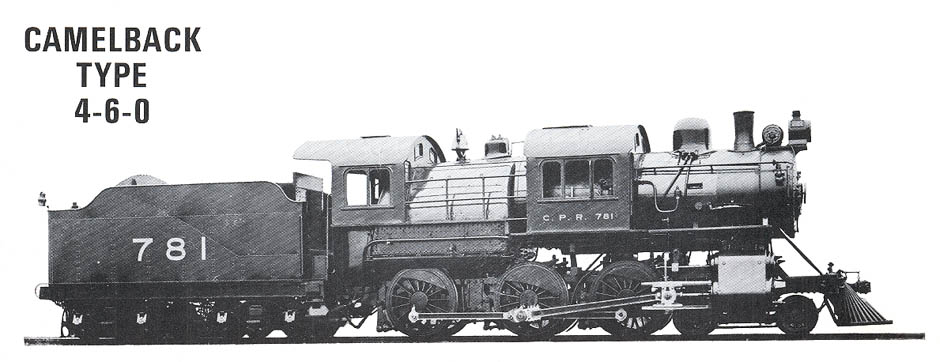 |
|
Collectors' Item 18 by Omer Lavallee From time to time in this series, we have discussed variations from the accepted physical appearance of steam locomotives. One of the more classic versions was the "Camelback", recognized by the positioning of the cab astride the boiler. In some applications in the United States, where such locomotives enjoyed much more use than in Canada, the rear cab was little more than a rudimentary shelter. This type developed as a result of the use of anthracite coal as a fuel. To obtain satisfactory results from hard coal, a wide and shallow firebox was desirable, and the dimensions of the firebox were extended practically to the full clearance limits of width. With such a wide firebox (see photograph), the cab could not be placed effectively over the firebox and boiler backhead; the alternative was to move it forward over the boiler There were disadvantages, of course. One was the fact that the engineman could not readily communicate with his fireman. Another was the small and confined space on each side of the |
boiler, which soon resulted in the
nickname "Mother Hubbard", because of the Hundreds of Camelback types were used in the New York area. They drew their fuel from the extensive anthracite mining areas of Pennsylvania. Canadian Pacific experimented with this design on six locomotives. A After two years of further tests, the decision was made to convert the D11s into conventional D10s, as the Camelback did not appear to hold much promise for Canadian Pacific. They were rebuilt in 1907 and served out working lives varying from 30 to 50 years without visible differentiation from the other 497 locomotives in the D10 class. |
|